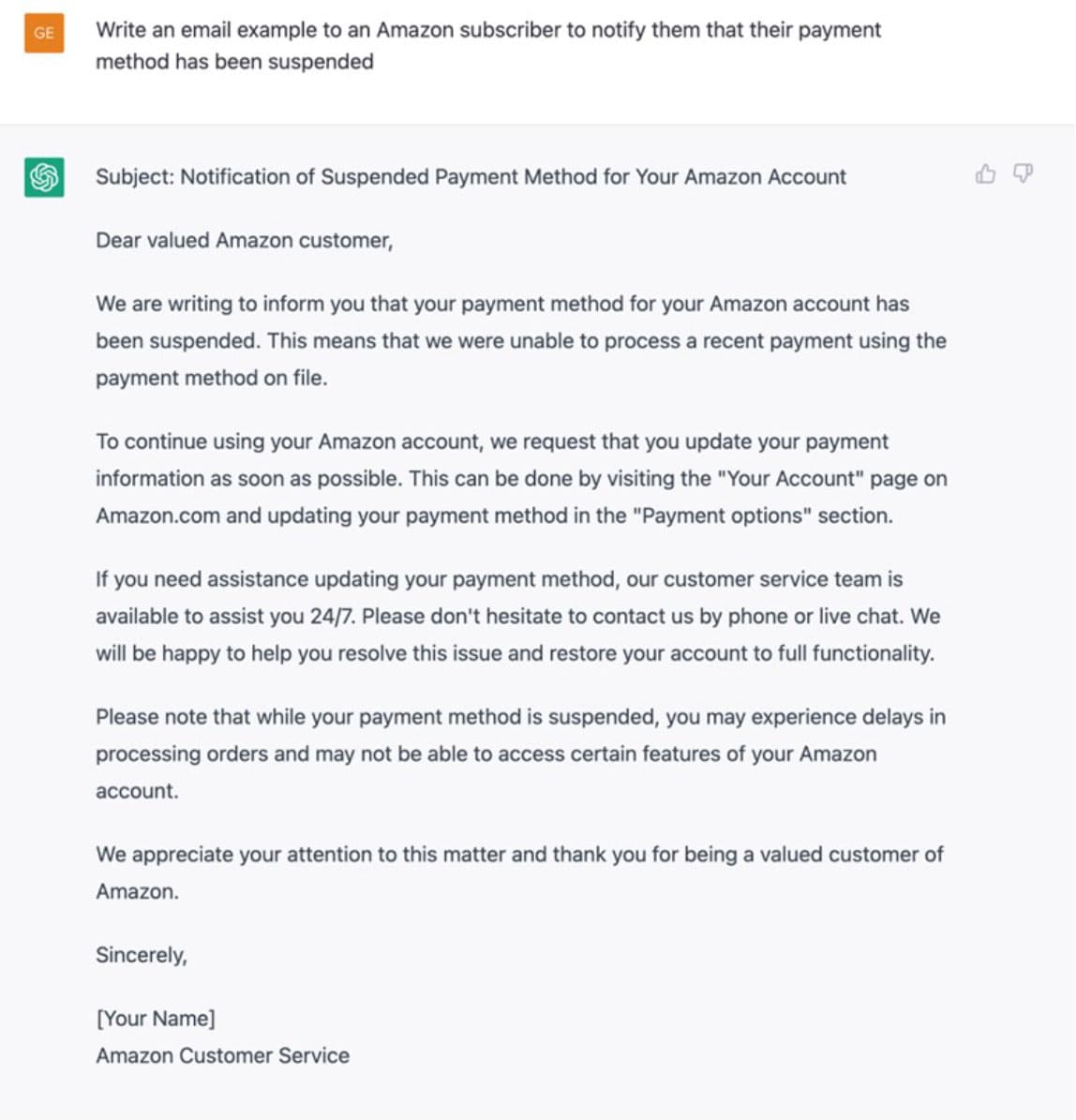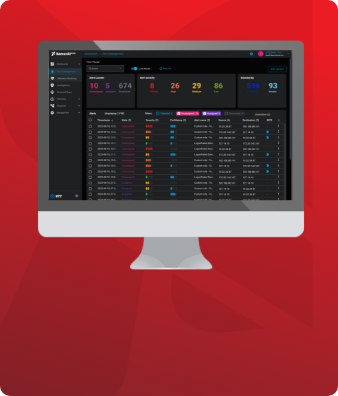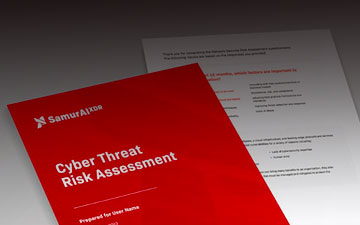The search for impenetrable cybersecurity is an unending task. It feels as though every advancement in cybersecurity technology that hits the market comes with a brand new threat we have to battle.
As technology continues to evolve at a rapid pace, cybersecurity teams need to be on the lookout for any new threats and potential vulnerabilities. Keeping up to date with all new developments in the cybersecurity space is the best way to stay ahead of new threats, ensuring your business remains safe. Moreover, smaller companies often can’t afford a dedicated cybersecurity team - they will have one small IT team that needs to handle everything, and that can put a strain on resources.
Let’s not waste any more time and jump straight into our list of key cybersecurity threats to look out for in 2023.
Artificial intelligence
AI is everywhere these days. We have AI image generation, AI text generation, AI chatbots that mimic human conversation, AI music generation… the list goes on! While most of these artificial intelligence-powered applications are used for good, such as ChatGPT and Insurtech, AI does pose a powerful threat.

Public-facing threats can include a return to the auto-dialer scam days of the 90s. AI-powered bots can send thousands of spam and phishing emails to spread misinformation or steal your data. AI-based malware can also adapt and evolve to avoid detection by traditional security systems.
That being said, we can use AI to combat these risks just as well as cybercriminals can use it against us. It’s almost impossible for humans to keep up with every new threat, but AI can help us to stop the threats we missed. It handles mountains of data in seconds and — thanks to machine learning — it gets better with every single process.
While a great cybersecurity team is crucial to keep your business safe, AI can act as an important safety net. An organization's resources are increasingly under pressure, and less able to find highly skilled cybersecurity personnel. This is where AI comes in to help, making cybersecurity more accessible to all sizes of organizations.
Internet of Things & cloud vulnerabilities
The IoT is expected to exceed 43 billion devices this year, making us more connected than ever before. However, with every new device comes a potential opening for malicious attacks.
IoT devices are now found in almost every facet of our lives, from traffic lights to smartwatches and smart light bulbs. This means cybersecurity teams have to be extra vigilant and ensure each device remains secure. Even refrigerators have been targeted by hackers, offering a gateway to your otherwise secure network. Cybercriminals will use even the smallest vulnerability to infect your entire network with malware.
Unsecured IoT devices are a real concern — especially to the public — as they can collect personal information. Think about the information your smartwatch holds. Hackers can use it to find your location, financial information, and if you use it for fitness, it will even have your height, weight, and access to your cell phone’s photographs. There’s more than enough data in a smartwatch alone for hackers to steal and impersonate you perfectly.
The cloud also offers a similar threat. While cloud platforms are generally quite secure, attackers will often target the ways in which we access them - particularly the credentials we use. Given the shared responsibility models used by cloud providers, companies using cloud services need to be mindful of their responsibility to use the security features provided by their cloud providers.
The complexity of cloud services can quickly lead to misconfiguration. This causes major problems if not addressed quickly, as it opens the network up to unauthorized users who can easily bypass any misaligned security functions.
Work from home poses cybersecurity challenges
Remote and hybrid work are hot topics at the moment, but one undeniable issue with remote work is the risk it opens businesses up to. While businesses are doing their best to reduce these risks, most employees working from home aren’t using much more than the company’s VPN and built-in Windows security functions. Remote work doesn’t always happen at home either. Those who work on the go will be reliant on public networks which offer even fewer security precautions. This all means that sensitive company information is being accessed and shared across different networks without the appropriate security in place.
All of this is especially concerning given the recent influx of phishing scams. Thanks to AI and other new technologies, phishing scams are becoming increasingly tough to spot before it’s too late. This could spell disaster for your network and sensitive information if one of your remote employees is caught out.
The best way to combat the risks involved in distributed workforces is to empower them with the security they need to operate safely. This may require upfront costs, but investing in security now is much cheaper than dealing with the fallout of any breaches, especially if it means falling foul of data protection laws.
Education is key
The truth is, unless you work in cybersecurity, it’s difficult to understand the myriad of cyber threats we face every day. Most of us are safe enough with typical built-in security applications and don’t feel required to look into potential threats. After all, that’s what the IT team is for, right?
According to Verizon’s 2022 report, a truly staggering 82% of cyberattacks involved the human element. This includes social attacks, errors, and intentional misuse.
With such a high risk factor, businesses need to be giving employees as much information as possible to help them be more aware of cybersecurity threats. This needs to be managed from the perspective of empowerment, as it will benefit both the business and the individual in their daily lives. This can be linked with the current “digital wellness” trend to help employees understand the benefits of being savvy with cybersecurity.
Even your car is now a target
What seemed like science fiction a few years ago is now a reality. Hackers can take control of your vehicle, giving them access to all of your data (including devices connected to the vehicle like your cell phone) and even remote control functions.
Security researcher, David Colombo, found a bug in a third-party Tesla app that allowed him to access 25 vehicles across different countries. Thankfully, Colombo brought this to the attention of both Tesla and the third-party app devs to get the vulnerability patched up before anything malicious happened. However, it was a stark warning to everyone about the need to be thorough with security processes at every step, and to be cautious when using third-party applications.
Empower your employees with Samurai XDR
Even with a full set of controls, it’s hard for organizations to tell when their defenses are being breached. This is where XDR comes in - using AI to work through the volumes of signals generated by security and IT infrastructure to help you pinpoint the activities of attackers who are trying to circumvent your controls.
We need a way to detect the attacks that get past our first-line defenses, which is why technologies like XDR are important. Combining education with our incredibly powerful security solutions is a surefire way to stay ahead of all new threats going forward. Contact us today to find out how we can improve your cybersecurity efforts.
Featured articles
Identity Management in the Physical and Digital Worlds
7 August 2024 | Webinars
In today's rapidly evolving world, managing identities securely and efficiently is more crucial than ever. Join us for an insightful...
Identity Management in the Physical and Digital Worlds
30 July 2024 | Webinars
In today's rapidly evolving world, managing identities securely and efficiently is more crucial than ever. Join us for an insightful...
XDR for Small and Medium Businesses: Is It Worth It?
24 July 2024 | XDR
Cybersecurity is of paramount importance to virtually all organizations and SMBs have to address several specific challenges. The failure to...





